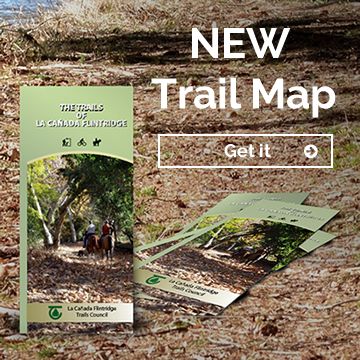Occasional observations on the wildflowers of 91011.
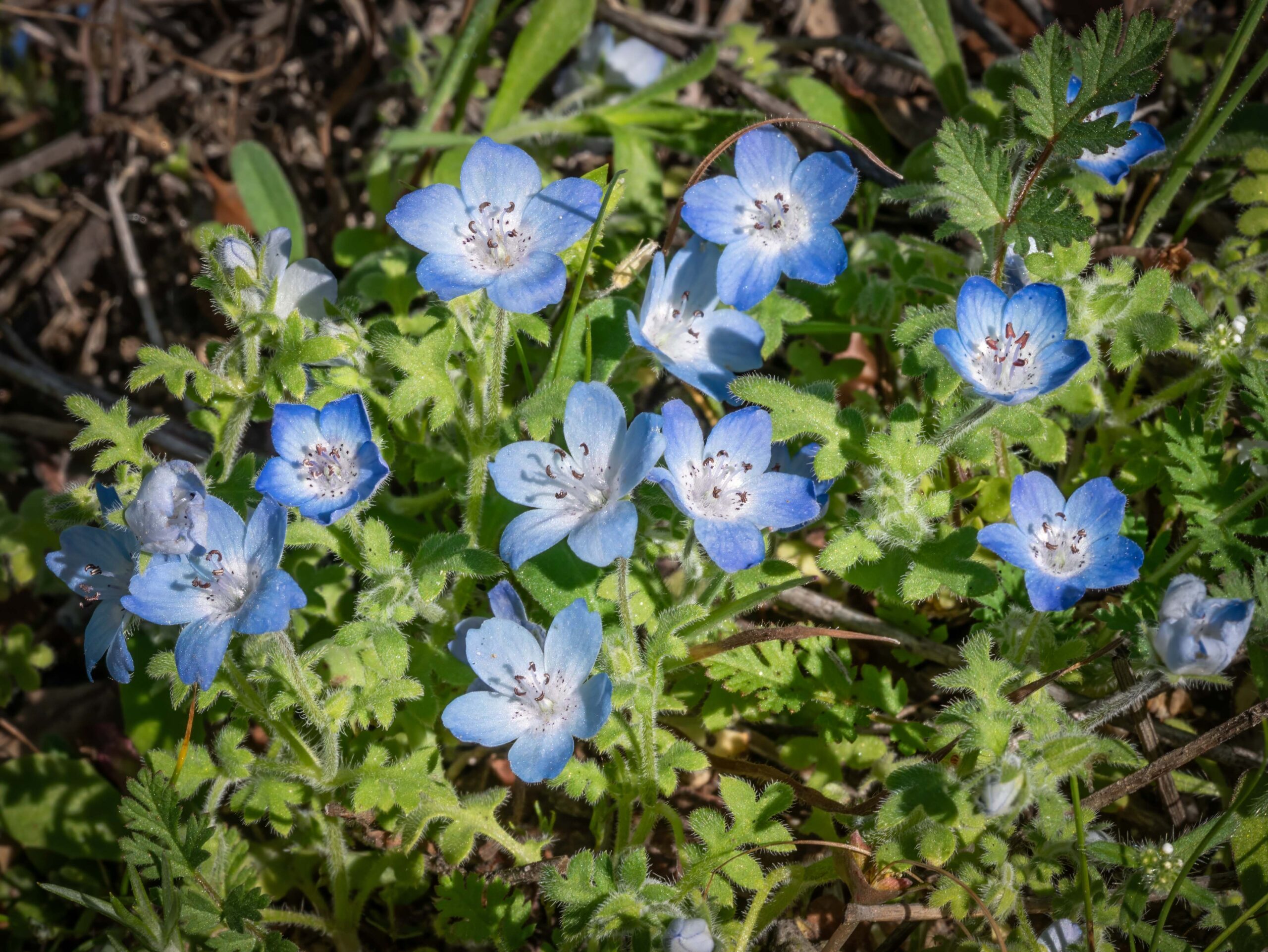
“Oh, look at those big blue eyes!” You might utter those words in a nursery as a baby smiles back at you, but you also might utter them when hiking in our local hills. Baby Blue Eyes (Nemophila menziesii) is a much-loved native flower that can be found throughout much of western California — indeed, almost everywhere except the eastern side of the Sierras (where it’s replaced by N. spatulata, Sierra Baby Blue Eyes) and the high deserts (where it does occur, rarely).
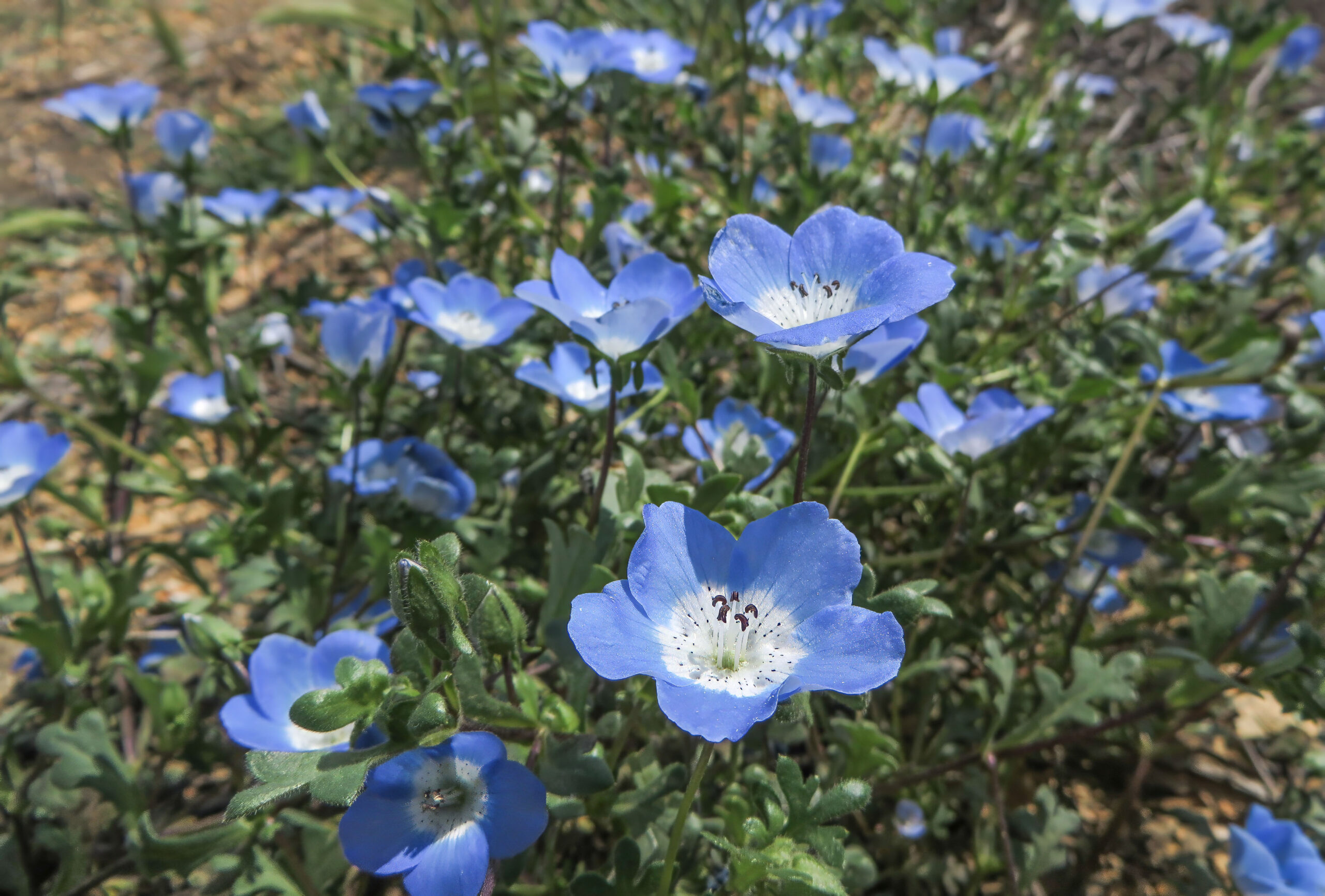
Baby Blue Eyes is impossible to misidentify when it’s in bloom. It’s a low-growing flower that favors grassy openings. It typically has five blue petals that surround a white center. Clearly, someone thought that a roundish blue flower with a white center ought to be imagined as a blue eye with a white pupil. Well, okay, why not?
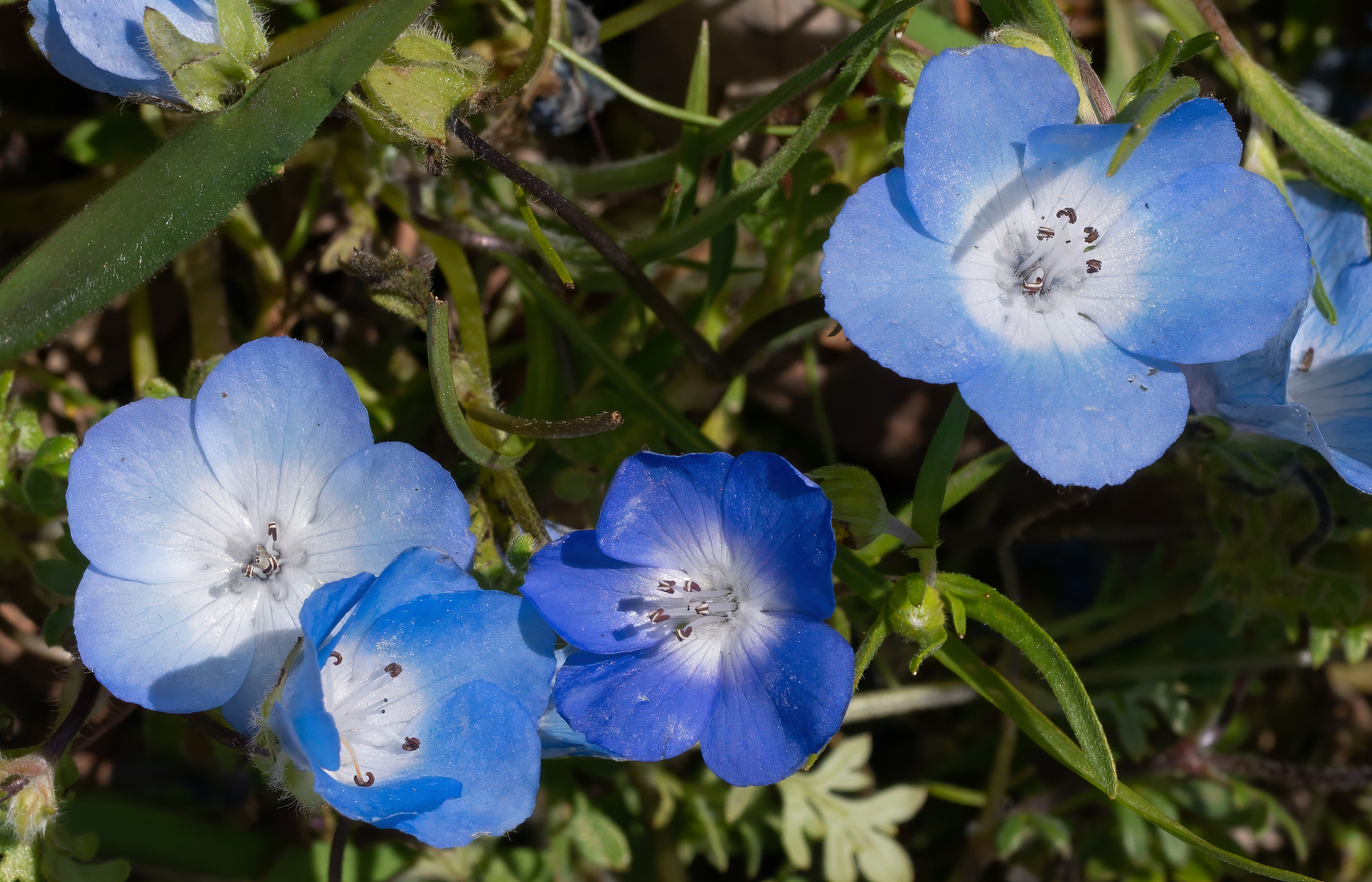
How many shades of blue do you see?
But at least the name is easy to remember — even though this flower isn’t always “baby” blue in color. It can be extremely pale blue or a very dark “true” blue. Sometimes the blue color extends all the way to the center so that there’s no white on the blossom. Further north in California, there’s a variety of Baby Blue Eyes that is pure white and the only blue is found in little dotted lines. And one should also take note of this flower’s other California relatives, especially Five-spot (N. maculata), which is like the white form of Baby Blue Eyes but with deep blue spots at the end of each petal.
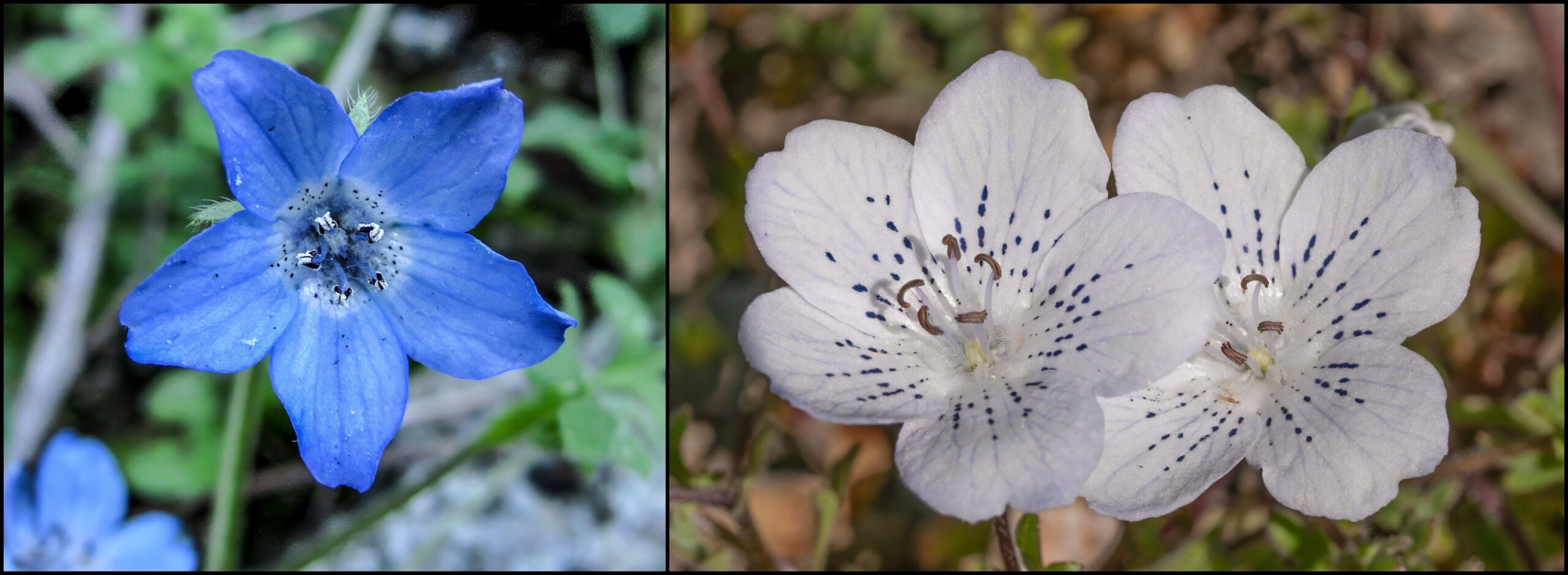
Baby Blue Eyes in its all-blue and all-white forms
Where and when to find it. Locally, Baby Blue Eyes occurs in the Verdugos and across the San Gabriels in grassy places or open meadows, sometimes right at the edge of trails or fire roads. Closer to home, you can find it during spring months on Mt. Lukens — on the Grizzly Fire Road, but also along our own Crosstown Trail (currently not maintained). It’s not abundant at Cherry Canyon, but it has been seen in at least four places: on the Conservancy Trail, off the shoulder of the Forest Hill Fire Road, along the upper section of Liz’s Loop, and on the steepest parts of the Descanso Fire Road. All of these sites are north-facing slopes, so don’t be surprised if other grassy northern exposures sprout some Baby Blues. If you like what you find, or if you don’t find it at all, remember that Baby Blue Eyes is easy to grow from seed, and the seed is itself easy to find. (Locally, try the Theodore Payne Foundation in Sunland.)
- For more about Baby Blue Eyes, visit Wikipedia.
- For information about growing Nemophila menziesii in your yard, visit Calscape.org.
- For distribution maps, taxonomy, and more photos, visit Calflora.org.
- You can also read (or subscribe to) other occasional notes on the wildflowers of 91011.

